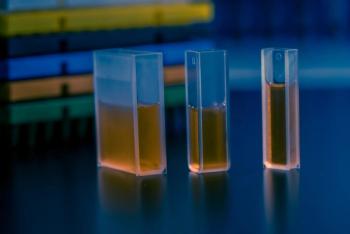
- Pharmaceutical Technology-02-01-2019
- Volume 2019 Supplement
- Issue 1
Best Practices for Immunogenicity Testing of Biologics
Pharmaceutical Technology spoke with John Pirro, senior director of large molecule bioanalysis at WuXi AppTec, which provides anti-drug antibody (ADA) and neutralizing antibody (Nab) assay development, validation, and sample analysis services, about best practices to ensure that biologics are safe and effective.
Pharmaceutical Technology spoke with John Pirro, senior director of large molecule bioanalysis at WuXi AppTec, which provides anti-drug antibody (ADA) and neutralizing antibody (Nab) assay development, validation, and sample analysis services, about best practices to ensure that biologics are safe and effective.
PharmTech: Why is immunogenicity testing needed?
Pirro (WuXi AppTec): Immunogenicity refers to the ability of an antigen to induce an immune response. Biological products with an increased potential for eliciting ADAs include therapeutic antibodies, enzyme therapies, peptides, and combination products. ADA can reduce the ability of the drug to reach the intended target, alter the PK [pharmacokinetics] profile, and potentially mediate serious adverse effects. A subgroup of ADAs, which are called neutralizing antibodies, can also cause potentially serious adverse effects.
PharmTech: Which immunogenicity testing methods are used to determine immunogenicity profile of a biologic? How do these methods differ, if at all, for biosimilars?
Pirro (WuXi AppTec): In practice, immunogenicity is assessed by the detection of antidrug antibodies using a positive control antibody, representing a potential polyclonal antibody in a biological system. There are many different types of assays ranging from classic ‘bridging’ assays to more complex ‘bead acid dissociation’ assays.
Which assay to use depends on the reagent you use as a positive control and the baseline immunogenicity of the drug in question. The methods can differ depending on the type of biosimilar (modified to stay in plasma longer) to other types of biologics (bi-specific antibodies) depending on the makeup of the biologic and the method of action. You must have experience in all forms of assays for immunogenicity to modify the design to fit each case.
PharmTech: How does immunogenicity testing differ when dealing with antibodies compared to other biologics?
Pirro (WuXi AppTec): For non-antibody biologics, test development needs to emphasize the fact that non-human amino acid sequences are often used to modify the protein, and these sequences are typically immunogenic. It’s important to use polyclonal antibodies as positive control. For antibodies, testing differs depending on the site of modification (Fb region for bi-specific), attachment sites for antibody drug conjugates, and whether it is a fusion type of antibody design. Special considerations have to be taken with these types of biotherapeutics, specifically around the reagents used to capture and detect the biologic. It is in this case that the use of monoclonal antibodies and IgY antibodies come into use.
PharmTech: What mistakes do companies make when performing immunogenicity testing?
Pirro (WuXi AppTec): The usual mistake is in the design of the ADA assay (lack of Domain ADA assays for fusion proteins, etc.) or in the reagent they are using to detect or capture the biotherapeutic. For example, using a monoclonal antibody when you should use polyclonal antibodies or not considering the use of IgYs to develop positive controls, which do not bind to rheumatoid Factors; the determination of the positive control for ADA or Nab assay; and not understanding that you will have to re-determine the cut point with disease state serum from the study.
Article Details
Pharmaceutical Technology
Supplement: Partnering for Bio/Pharma Success
February 2019
Pages: s19
Citation
When referring to this article, please cite it as S. Haigney, “Xxxxxxx," Partnering for Bio/Pharma Success Supplement (February 2019).
Articles in this issue
almost 7 years ago
Analysis of Sub-Visible Particlesalmost 7 years ago
Emerging Therapies Test Existing Bioanalytical Methodsalmost 7 years ago
Utilizing Analytical Services for Success in Innovationalmost 7 years ago
Determining Drug Stabilityalmost 7 years ago
CMO Expansions and Investmentsalmost 7 years ago
Ensuring Quality Control in Vendor Relationshipsalmost 7 years ago
A Systematic Approach to Tech Transfer and Scale-UpNewsletter
Get the essential updates shaping the future of pharma manufacturing and compliance—subscribe today to Pharmaceutical Technology and never miss a breakthrough.




